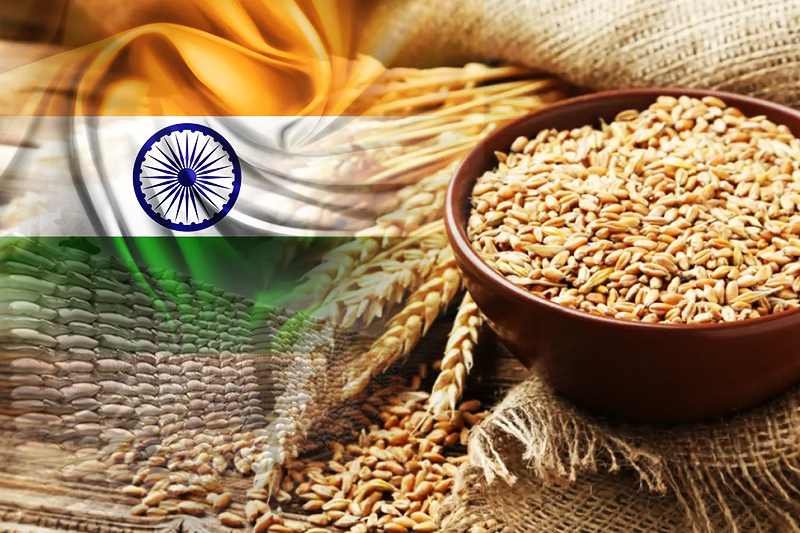Indian government increases minimum support price for wheat

The government has announced a 7.1% increase in the MSP of wheat for the rabi crop (Rs 2,275 per quintal), for which sowing is just beginning. This is the highest rate of increase in the last 10 years.
Wheat is the largest rabi crop and only a few years back, commentators, including this writer, were looking for ways to reduce the procurement of wheat at MSP because the government was procuring much more than its requirement for meeting its obligations under the National Food Security Act, welfare schemes and the Open Market Sale Scheme (OMSS).
So, what has changed in just over four years? The answer is: weather.
Government data of production does not show any significant decrease. The estimate of wheat production (issued in May 2023) for 2021-22 and 2022-23 was 107.74 million tonnes (mt) and 112.74 mt respectively. The trade estimates (unverified) were, however, lower by about 2-5 mt.
In the final estimate for 2022-23 released on October 18, 2023, the government has acknowledged that wheat production was lower, at 110.55 mt.
Last year, wheat prices in the open market had been rising. In January 2023, wheat inflation reached 25% and mandi prices were hovering around Rs 2,700-2800 per quintal. The MSP for the Rabi Marketing Season (RMS) 2023-24, beginning in April, was only Rs 2,125 per quintal. To bring down wheat prices to the level of MSP so that the government can procure, it sold 3.3 mt of wheat under OMSS in February and March 2023.
The government would not like the story to be repeated this year, so a 7.1% increase in MSP of wheat is neither surprising nor imprudent. It is not that the government has been unaware of the emerging threat of adverse weather events. With more resources at its command than anyone else, the government has a more accurate understanding of market trends of the future.
As early as August 16, 2021, the Securities and Exchange Board of India (SEBI) suspended the launch of any new contract of chana on the National Commodity and Derivatives Exchange (NCDEX).
On December 20, 2021, SEBI banned futures and options contracts in seven agricultural commodities for one year, that is, till December 20, 2022. The ban was applicable to wheat, paddy (non-basmati), chana, mustard seeds and their derivatives, soyabean, crude palm oil and moong. It has been extended till December 2023.
While the experts were talking about India becoming a permanent agriculturally surplus nation, the government has used all the measures at its command to rein in food inflation.
It would like to procure at least 25-30 million tonnes of wheat from the rabi crop of 2023-24 (in the RMS 2024-25 beginning from April 2024). An attractive MSP was therefore necessary to bring farmers to the procurement centres of the government.
The government has already taken strong action to contain domestic prices of wheat. In May 2022, export of wheat was banned. In August 2022, the export of wheat atta and products was also banned. In June 2023, stockholding limits were imposed on wheat and retailers are not allowed now to hold more than 10 tonnes at each retail outlet. Even big chain retailers can keep only up to 10 tonnes at each outlet and 3,000 tonnes at all their depots combined.
It seems that adverse weather events have had a deep impact on India’s agricultural success. Much higher investment in research is needed to develop climate-resistant varieties of seeds, as a matter of priority.
Read also
Wheat in Southern Brazil Impacted by Dry Weather and Frosts
Oilseed Industry. Leaders and Strategies in the Times of a Great Change
Black Sea & Danube Region: Oilseed and Vegoil Markets Within Ongoing Transfor...
Serbia. The drought will cause extremely high losses for farmers this year
2023/24 Safrinha Corn in Brazil 91% Harvested
Write to us
Our manager will contact you soon



